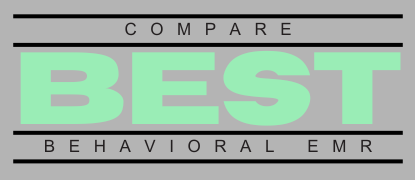Running a behavioral health practice poses unique challenges, from managing appointments to ensuring the privacy of sensitive patient data. A well-implemented behavioral health Electronic Medical Records (EMR) system can be a game changer, revolutionizing your operations and boosting efficiency. Let’s delve into how you can elevate your practice with the right EMR solution.
Understanding the Power of Behavioral Health EMR
The cornerstone of any modern healthcare facility, including behavioral health practices, is a robust, secure, and efficient EMR system. But what exactly is a behavioral health EMR and why should you consider integrating it into your operations?
What is a Behavioral Health EMR?
An EMR is a digital version of a patient’s chart. A behavioral health EMR, specifically, is tailored to meet the unique needs of mental health practices. It differs from general health EMRs by offering specialized features such as therapy notes, treatment plans, and mental health assessments. These features help streamline the documentation process and enhance patient care.
Benefits of a Behavioral Health EMR
Integrating a behavioral health EMR into your practice can offer numerous benefits:
- Efficient documentation: An EMR allows you to electronically record patient information, eliminating paper-based processes and reducing errors.
- Improved communication: EMR systems facilitate seamless communication between clinicians and staff, improving coordination and patient care.
- Enhanced security: EMR systems provide robust security measures to protect sensitive patient information.
Choosing the Right Behavioral Health EMR for Your Practice
Every practice has unique needs and requirements. Therefore, it’s vital to choose a behavioral health EMR that aligns with your specific goals and operational needs. Here are some factors to consider:
Customizability
Ensure the EMR system can be tailored to fit your practice’s unique workflow. This includes custom forms, templates, and reports. The more adaptable the system is, the more efficiently it will serve your practice.
Usability
Choose an EMR that’s user-friendly and intuitive. Staff should be able to navigate the system easily, reducing the time required for training and transition.
Integration Capabilities
Your EMR should integrate seamlessly with other software used in your practice, such as billing or scheduling systems. This will foster a more streamlined and cohesive workflow.
Implementing Your Behavioral Health EMR
Once you’ve chosen the right EMR, the next step is implementation. This process can be complex and requires careful planning to ensure a smooth transition. Consider the following steps:
Prioritize Training
Ensure all staff members are thoroughly trained on the new system. This will help prevent errors and improve efficiency in the long run.
Test the System
Before fully transitioning, test the EMR system to identify and address any potential issues. This will ensure a smoother transition when the system goes live.
Seek Support
Most EMR vendors offer ongoing support. Take advantage of this to address any issues that arise during the implementation process.
Conclusion: Embrace the Future with Behavioral Health EMR
Adopting a behavioral health EMR is a significant step towards modernizing your practice and enhancing patient care. With careful selection and thoughtful implementation, an EMR system can boost efficiency, improve communication, and secure sensitive patient data. Start your journey towards a more efficient practice today with a free practice analysis.
For more insights into behavioral health practices and the role of EMR, refer to this comprehensive study.
**Meta Description**: Discover how a behavioral health EMR can revolutionize your practice. Learn how to choose, implement, and benefit from an EMR system in your behavioral health practice.
